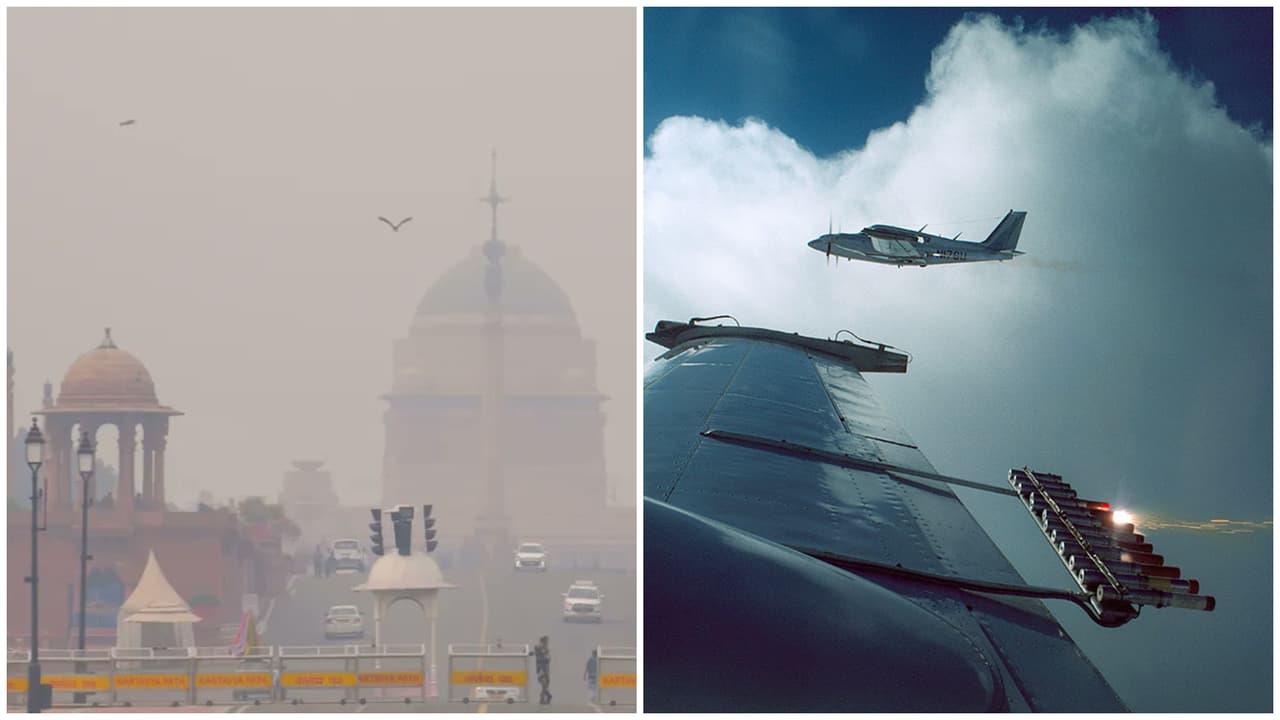
Why Experts Call Delhi's Rs 3.2-Crore Cloud Seeding A Costly, Unsustainable Gimmick Against Pollution
Delhi's cloud seeding experiment seen as a desperate bid to wash away the national capital's smog has drawn sharp criticism from environmental experts, who have dismissed it as a“hugely expensive, temporary, and unsustainable” measure that offers no lasting relief. According to the Memorandum of Understanding (MoU) between the Delhi Environment Department and IIT-Kanpur, the project carries a budget of Rs 3.2 crore for five trials, each trial costing nearly Rs 64 lakh. Of the three trials conducted so far in north Delhi, none have produced significant rainfall. Meanwhile, the city's Air Quality Index (AQI) continues to remain in the 'very poor' to 'poor' range.
Experts decode why Delhi's Rs 3.2 crore experiment fell flat
Anumita Roychowdhury, Executive Director (Research and Advocacy) at the Centre for Science and Environment, said,“The city has not yet recorded any substantial rainfall after cloud seeding. Even if the rains wash out the pollutants, the pollution will bounce back quickly. The impact lasts from hours to a couple of days.”
Labeling the initiative as unsustainable, she added,“It cannot be done regularly for the entire winter season. Such investments need to target actual emission reduction from sources on the ground for sustained air quality improvement to protect public health.”
Experts argue that the very foundation of the project is flawed due to Delhi's dry winter conditions. Dr. Shahzad Gani, Assistant Professor at the Centre for Atmospheric Sciences, IIT Delhi, explained that natural rainfall in winter is rare unless influenced by a western disturbance.“If it rains due to a western disturbance, there is no point in carrying out cloud seeding. And if an intense spell of rain occurs simultaneously during the cloud seeding process, causing very heavy rain and damage to life and property - even if it is actually unrelated to cloud seeding - who will take responsibility for it?”
He further questioned the government's fascination with quick-fix technologies.“Why do we adopt silver-bullet technologies like smog towers, smog guns, and cloud seeding? There is a need to systematically reduce emissions from different sources.”
Echoing similar concerns, Sunil Dahiya, Founder and Lead Analyst at EnviroCatalysts, said that unless Delhi tackles emissions from transport, power, and construction sectors, no meaningful improvement is possible.“Cosmetic measures may create short-term visibility benefits but are not sustainable solutions. The focus should instead be on coordinated action across states and agencies through an airshed-based approach that targets the actual sources of pollution,” he said.
Environmental activist Bhavreen Kandhari also questioned the timing of the experiment. She pointed out that cloud seeding only works when the atmosphere is moisture-deficient and precipitation conditions are marginal.“The skies were already rich with moisture, and a western disturbance was forecast to bring natural rain. Under such circumstances, cloud seeding adds little scientific value; it becomes a costly experiment chasing what nature is already prepared to deliver. Clean air will not come from artificial rain, but from sustained reductions in emissions, dust control, and responsible policy,” said Kandhari.
Legal Disclaimer:
MENAFN provides the
information “as is” without warranty of any kind. We do not accept
any responsibility or liability for the accuracy, content, images,
videos, licenses, completeness, legality, or reliability of the information
contained in this article. If you have any complaints or copyright
issues related to this article, kindly contact the provider above.

















Comments
No comment